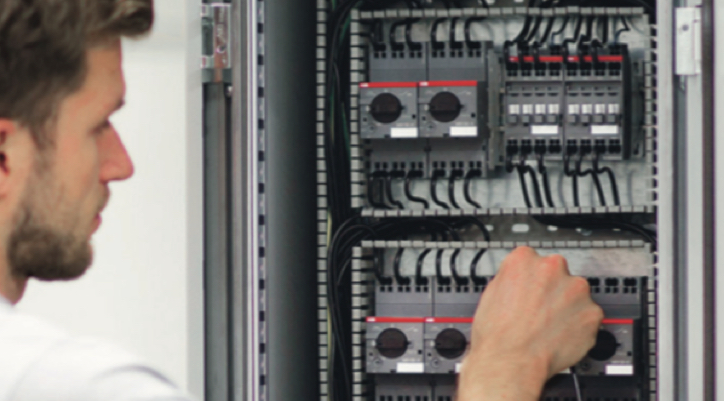How much time and money can push-in contactors save you?
Panel builders are always looking for ways to speed production, reduce costs, and improve panel reliability. Devices equipped with push-in connectors check all three of those boxes. Use this simple tool to calculate your potential savings.
Everyone who works in manufacturing has heard of Lean Six Sigma and is probably familiar with some of the concepts. The bottomline goal of all Lean Six Sigma tools and practices is pretty simple: find and eliminate waste.
Waste reductions can include major improvements that create monumental savings of hundreds of thousands of dollars. Most savings, though, are smaller and more incremental. Still, all waste reduction saves money and goes straight to the bottom line.
A very simple way to eliminate waste in your panel shop is to reduce one of the most commonly performed activities: tightening wired connections. You can achieve those reductions by selecting components with push-in connections. ABB AF contactors, for example, include this feature.
Veteran panel builders may have hesitation about these types of connections, believing there’s no good substitute for tried-and-true screw-on terminations. Actually, whether you’re using ferruled, rigid, or stranded wiring, push-in connections are a great alternative to screw-in connections.
- Tight connection: The internal spring grips the wire tightly. There’s never any concern about an incorrectly torqued screw. At a trade show a few years ago, this was graphicly demonstrated by a five-pound weight hanging from a wire inserted in a push-in connection.
- Reliably connected: Because there’s no screw to loosen, push-in connections are more reliable, especially in panels that experience any vibration, whether in transit or while in use. Most panel builders have had or heard a horror story about a panel fire or explosion. While trying to diagnose the cause, the first thing investigators typically look for is loose wires.
- Training reduction: Making a wire connection isn’t rocket science, but there are right and wrong ways to do it which have to be taught to your team. Push-in connections don’t require specialized training.
- No tools: No tools required speeds up wiring as well as reduces the need for calibrating torque tools.
- Faster assembly: Using push-in versus screw-on terminals cuts the time for each connection by
about half.
Clearly there are many benefits to push-in connectors, but devices equipped with these connectors are slightly more expensive than devices with the older, screw-on technology. For some applications, such as high vibration situations, the more reliable connection makes that higher cost worth every penny.
But how about other applications? You can actually calculate the benefit of push-in contactors by using a simple, free tool. Enter a few numbers based on your panel building operations, and the tool determines an approximate annual savings number.
Example: If you know you purchase 800 contactors per year, and spend about $400 on calibrations for torque wrenches, with a $0.03 cost per ferrule and estimated 48 devices reworked per year, at a $50/hour labor rate, you could save $6,011 annually using push-in contactors. Click here to use the tool
Eliminating waste
Anyone with any experience in Lean Six Sigma practices probably recalls TIM WOODS. The letters refer to the most common forms of waste in manufacturing. Push-in connectors reduce three of those wastes:
- Defects, by creating panels that are less likely to fail due to loose connections
- Motion, by eliminating the need to find tools
- Extra-processing, by cutting in half the time to make each connection
Take five minutes to enter a few variables into the savings calculator tool to see if it makes sense for you to select devices with push-in contactors for your panels.
—
Berea Janzen
Product Marketing Manager
ABB Electrification Business




